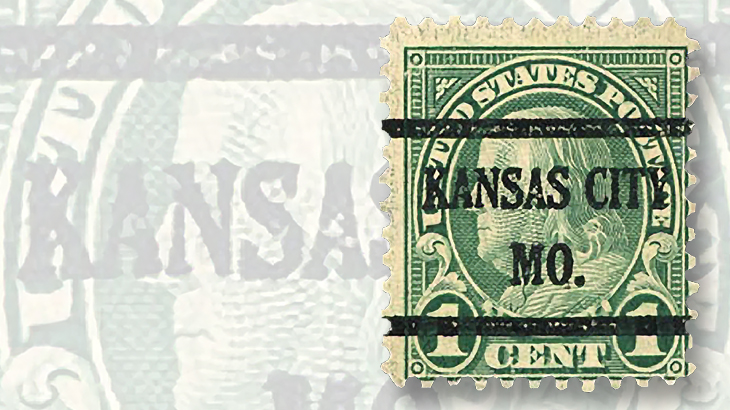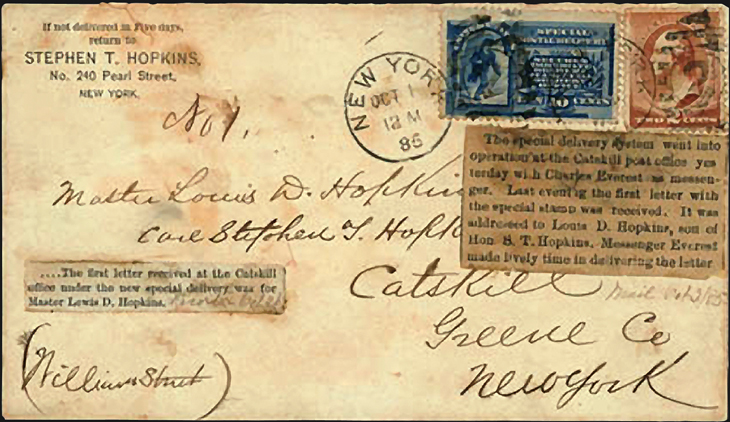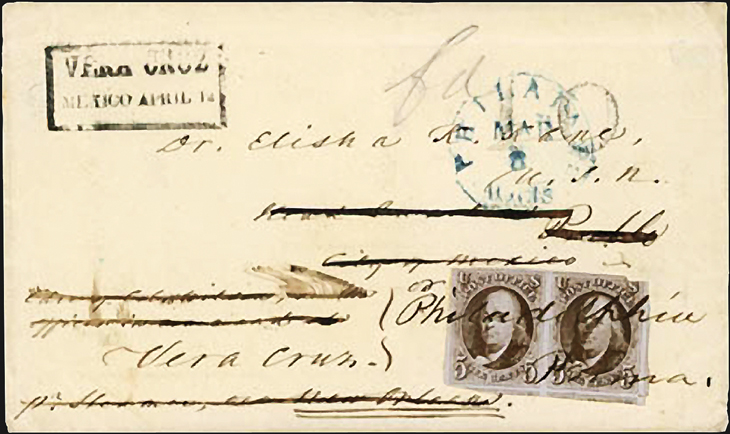Auctions
‘Trifecta’ 1848 naval cover tops $19,000 in Rumsey sale
Auction Roundup — By Matthew Healey
There are many reasons to collect postal history.
A stamp on a cover that once passed through the mails has fulfilled its destiny, going from a mere collectible to an artifact of social history, an object with human as well as philatelic interest.
Another person, from another time and place, held that stamp, licked it, and placed it on a letter as part of the profoundly human act of communicating with someone far away.
The cover itself, with its postal markings and notations, also serves as a first-hand record of the system that transported it: the rates, routes, and method of handling are all documented for us to study.
Finally, depending on the sender and recipient, there might be a more explicit human tale to be told. When these individuals are known to us from history, we also have the thrill of holding a direct connection to their fame — a small piece of their long-ago lives — in our hands.
Connect with Linn’s Stamp News:
Sign up for our newsletter
Like us on Facebook
Follow us on Twitter
At its apex, postal history wraps up all three of these aspects in one neat little package.
Such was the case with a cover offered by Schuyler Rumsey Philatelic Auctions in their April 27-30 sale at the Westpex stamp show in San Francisco.
The letter was mailed in 1848 to Dr. Elisha Kent Kane, around the time he was serving in the Mexican-American war.
Kane was a surgeon and medical officer in the United States Navy who voyaged to China and Africa, and twice went to the Arctic in search of Sir John Franklin’s lost party.
The cover was posted from Philadelphia March 8 and routed “per Steamer, via New Orleans,” according to a note below the address. It did not catch up with Kane in Mexico, however, because he had already left following his distinguished service in the war there.
An endorsement to the left of the address dictated what would happen next: “If Dr. Kane has left Vera Cruz send to Philadelphia Penna.”
The Mexico address was crossed out. After getting a “Vera Cruz, Mexico April 12” boxed postmark and matching “10” handstamp, indicating postage due, the letter was returned to Philadelphia, with the forwarding address tying a pair of U.S. 5¢ Benjamin Franklin stamps of the 1847 issue (Scott 1).
This cover hits the postal-history trifecta.
First, it is the only recorded cover to Mexico bearing America’s first stamp.
Second, it shows the fascinating game of hopscotch that letters in the 19th century sometimes had to play to catch up to their recipients.
And finally, the recipient in this case was none other than a celebrated naval officer — Kane would travel farther north than any other Arctic explorer up to that time — making this item exceptionally historic.
The cover doubled its presale estimate to fetch $19,550, including the 15 percent buyer’s premium added by Rumsey to all lots.
Kane’s health was severely impaired by his second voyage to the Arctic in 1853-55. After sailing to England to deliver his report personally to Franklin’s widow, he went to Havana to recuperate but died there early in 1857, just days shy of his 37th birthday.
His funeral train from his New Orleans home to Philadelphia was the second-longest of the 19th century, outdone only by Lincoln’s in 1865. In 1986, Kane was honored on a 22¢ stamp in the Arctic Explorers set (Scott 2220).
Another important item in the Rumsey sale was a first-day-of-service cover for the first U.S. special delivery stamp, issued Oct. 1, 1885, for the inauguration of express mail service.
Five hundred fifty-five post offices were authorized to handle special-delivery letters beginning on that date, and five covers survive from the first day (the Scott catalog notes a couple of covers mailed a day or two earlier and delivered on Oct. 1).
The somewhat grubby cover bears a 2¢ Washington (Scott 210) paying the regular postage and the new 10¢ Running Messenger (E1) paying the special delivery fee.
The cover was sent from New York City, where it was postmarked at noon, to the town of Catskill, some 135 miles to the north, which it reached at 7p.m. the same day.
Pasted to the cover, which sold for $14,375, is a local newspaper clipping from the following day, reporting on the new service and the letter’s arrival: “The Special Delivery system went into operation at the Catskill post office yesterday … Last evening the first letter with the special stamp was received. It was addressed to Louis D. Hopkins … Messenger Everest made lively time in delivering the letter.”
The highlight among the single stamps in the Rumsey sale was a 1¢ Franklin definitive of the Fourth Bureau Issue, perforated gauge 11, that emanated from a leftover supply of rotary-printed stamps originally intended for coils. As such, the stamp design measures 19¼ millimeters by 22½mm, identifying it as a scarce Scott 596.
Though printed in 1924, the variety was unknown to the philatelic world until 1962. It is “without question the rarest United States issue of the 20th century,” according to the auction firm.
Detailed articles by Ken Lawrence, published in Linn’s in 2015, give in-depth information on the genesis and history of this stamp and its sheet-waste sibling, Scott 594.
Off-center, faintly creased, and with a bold Kansas City, Mo., precancel, the stamp offered by Rumsey is nonetheless one of just 15 examples known. It sold for $138,000.
MORE RELATED ARTICLES
Headlines
-
US Stamps
Oct 7, 2024, 12 PMVasiliauskas named president of Mystic Stamp Co.
-
US Stamps
Oct 6, 2024, 5 PMApgar souvenir card available
-
US Stamps
Oct 6, 2024, 4 PMFirst Continental Congress and U.N. stamps receive Scott catalog numbers
-
World Stamps
Oct 5, 2024, 1 PMCanada Post continues Truth and Reconciliation series











